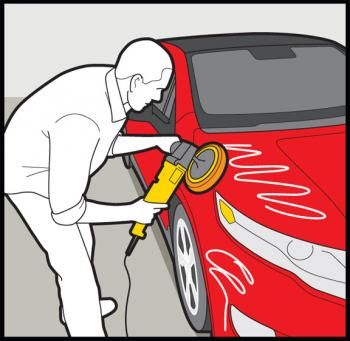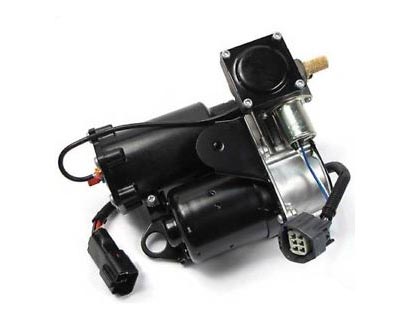
How to polish a car
Over time, your paint will fade and fade, losing some of the shine of the new car you had the first time around. Your car's paint is exposed to environmental elements that cause pitting, corrosion, chipping, and fading. This may be due to acid rain, aging, bird droppings, sand and dust on the clear coat, or the sun's UV rays.
Your car's paint is coated with a clear, hardened substance known as lacquer. This clear coat protects the actual paint from fading in the sun or damage from other elements. The good news is that the appearance of your clear coat can be restored.
The process of restoring the shine of your car's paintwork is called polishing. When you polish your car, you are not trying to fix deep scratches or blemishes, but rather you are trying to restore the car's full shine. You can polish your car right in your driveway, and here's how:
Gather the right materials - To properly polish your car, you will need: a bucket of warm water, polishing compound (recommended: Meguiar's M205 Mirror Glaze Ultra Finishing Polish), polishing or polishing tool pads, car wash soap, microfiber cloths, polishing tool (recommended: Meguiar's MT300 Pro Power Polisher), pavement and tar remover, and a wash sponge or mitt.
Wash the car - Wash loose dirt off the vehicle with a hose or pressure washer. Wet the entire surface.
Mix car wash soap - Mix car wash soap in a bucket of warm water according to the soap's instructions.
Wash your car completely — Starting at the top and working your way down, wash your car with a soft sponge or car wash mitt.
Rinse and dry your vehicle completely - Rinse the soap from the car with a high pressure washer or a hose, removing all the foam from the car. Then wipe the car dry with a microfiber cloth.
Remove any stuck substances - Soak a corner of a cloth in the cleaning agent and vigorously wipe the sticky stains.
Wipe off the cleaner — Using a dry, clean cloth, remove the cleaner completely.
Wash the car — Following the previous steps, wash the car again and then dry it again. Then park in a shaded area.
Apply a polish - Apply polish to the surface of your car. Work with one panel at a time, so apply compound to only one panel. Use a clean, dry cloth to polish the car.
Connection smear - Place a rag on the polishing compound and smear it around to start. Work in large circles with light pressure.
buff paint - Polish the paint with the mixture in small circles with moderate to strong pressure. Press firmly so that the very fine grit of the compound penetrates the clear coat.
Functions: Work on the template to make sure the entire panel is polished.
Dry and wipe - Stop when the panel has been completely polished once. Wait for the composition to dry, then wipe it with a clean, dry cloth.
Check your work - Make sure your paint is uniform, shiny. If you can easily see swirls or lines, refinish the panel. Repeat as many times as you need to achieve the desired glossy uniform finish.
Functions: Wait 2-4 hours to manually polish the car to a high shine. Since this is a lot of effort, take a break every 30 minutes or so.
Retry - Repeat for the rest of the painted panels on your car.
Collect Buffer - You can use a power buffer or polisher to give your car a high gloss finish. Place the polishing pad on the feed buffer. Make sure the pad is for buffing or buffing. This will be a foam pad, usually about five or six inches in diameter.
A warning: However, if the polisher is left in one place for too long, it may overheat the clear coat and the paint underneath, which may cause the clear coat to cut through or the paint to discolor. The only fix for burnt paint or clearcoat is to repaint the entire panel, so always keep the buffer in motion.
Prepare your pads - Prepare the pad by applying a polishing compound to it. It acts as a lubricant, protecting the pad foam and car paint from damage.
Set the speed - If there is a speed control, set it to medium or medium-low speed, approximately 800 rpm.
Apply connection - Apply polishing paste to the painted panel. Work one panel at a time to ensure complete coverage without missing a single spot.
Connection smear - Place the buffer foam pad on the polishing compound and smudge it a little.
Full contact - Hold the tool so that the polishing wheel is in full contact with the paint.
Enable Buffer - Turn on the buffer and move it from side to side. Use sweeping wide strokes from side to side, covering the entire panel with the polishing compound. Work across the entire surface using moderate pressure, blocking off the passes with buffer so you don't miss any areas.
A warning: Always keep the buffer in motion while it is on. If you stop, you will burn the paint and varnish.
Functions: Do not remove all the polishing paste from the paint with a buffer. Leave some on the surface.
Wipe — Wipe the panel with a clean microfiber cloth.
Inspect — Check for an even sheen across the entire panel with no buffer streaks. If there are dull spots or you still see swirls, repeat the procedure. Make as many passes as you need to get an evenly shiny surface.
Retry - Repeat on other panels.
By following these steps, you will find that the process is very simple. If you have other problems with your vehicle or if you have any questions about installing snow chains, feel free to call a mechanic today.
